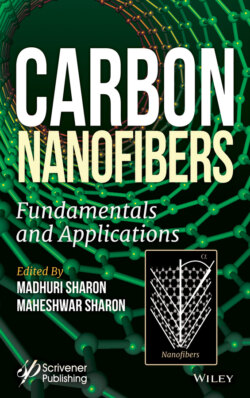Читать книгу Carbon Nanofibers - Группа авторов - Страница 47
2.2.2.1 Characterization of CNF Obtained by Pyrolysis of Plant Metabolites
ОглавлениеPlants [30] are a major source of CNM, which can catalytically decompose to liberate carbon atoms and constitute carbon materials of different sizes and shapes.
XRD analysis of all the three oils shows a diffraction peak at 26° {002}, which according to [31] is designated to graphitic carbon. Moreover, peak at 44° is also seen in all three graphs that are known to be associated with carbon {111}. A small peak present at 78° of XRD of castor oil depicts the presence of the Silica, which could be due to the boat in which the catalyst was placed.
Raman Spectroscopic analysis of all the three oils shows D-band as well as G-band, thus confirming its graphitic nature (Figure 2.9).
Plant parts like straw, stem, etc., are not only composed of pure hydrocarbons but also other chemicals; therefore, they produced plant anatomybased CNF. Whereas plant-derived oils that are pure hydrocarbon produced defined CNF.
Cellulose is another plant metabolite which is also secreted by many bacteria and extracted from various marine filamentous algae. Cellulose nanofibers are considered as efficient replacements for conventional polymers due to their nano size, ease of preparation, low cost, tunable surface properties and enhanced mechanical properties. CNF obtained from algal sources is less compared to plants and bacterial sources. CNF finds a wide variety of applications such as drug carriers, tissue regenerating scaffolds, water purification, etc. Mulyadi et al. (2017) [32] have used doped carbon electrocatalyst from cellulose nanofibrils for metal-free oxygen reduction and hydrogen evolution.
